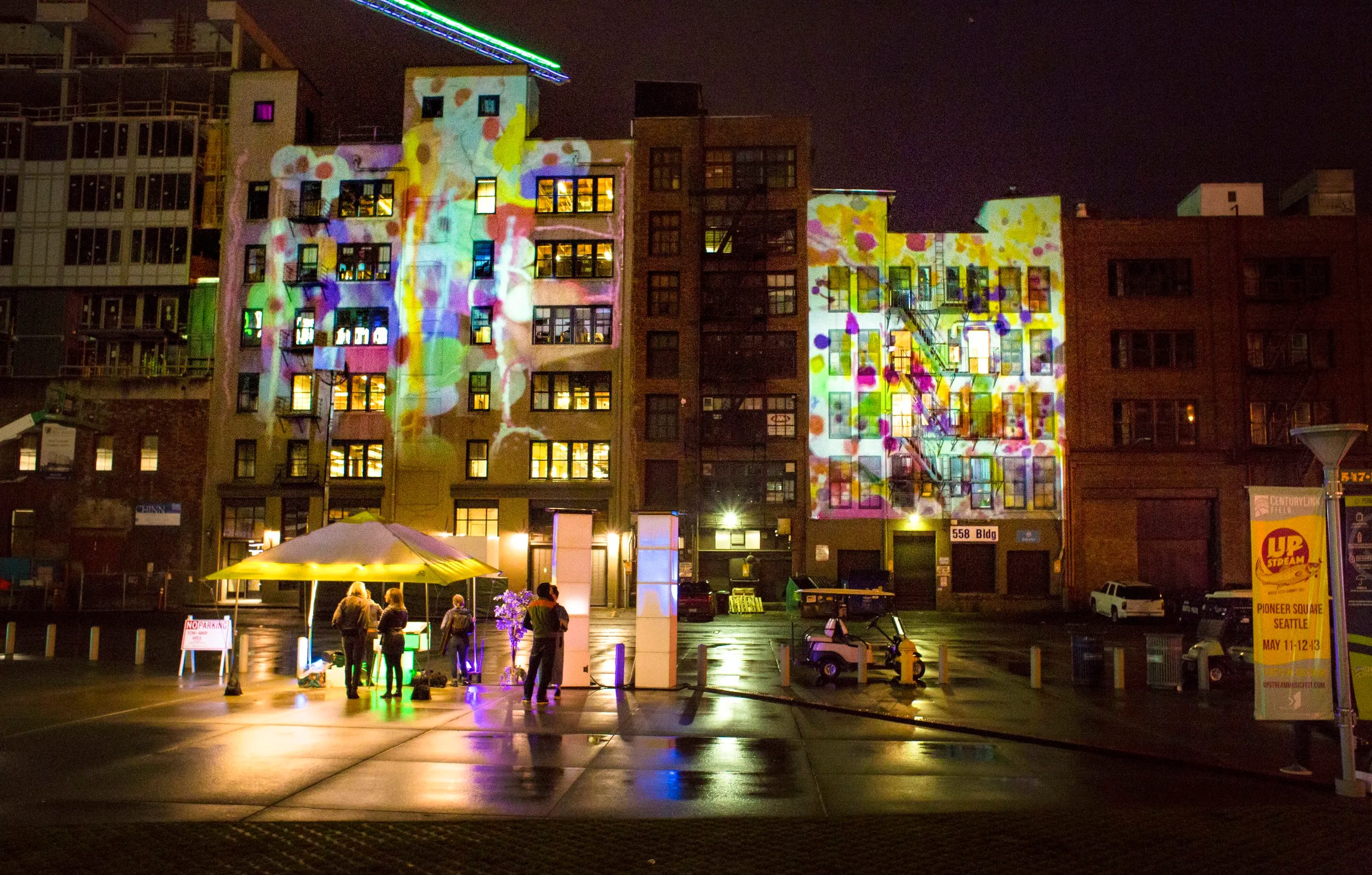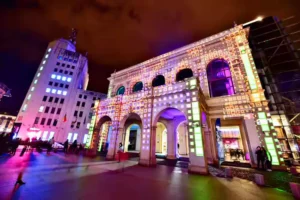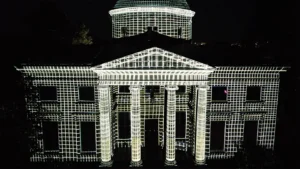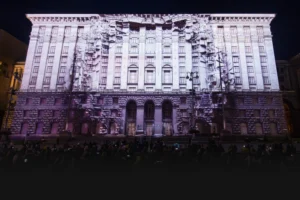Blogs
Key Considerations When Planning a 3D Projection Mapping Project
In today’s digital age, 3D projection mapping offers an innovative way to create visually stunning experiences. Whether you’re planning an art installation, designing a theme park attraction, or illuminating a building during an event, projection mapping can captivate audiences in extraordinary ways. However, a successful project requires careful planning. At Peach Prime Consultancy, we help guide you through the essential considerations when planning a 3D projection mapping project.
Choosing the Right Projection Technology
The projection technology you choose is crucial to delivering an impactful experience. Here’s a breakdown of the most commonly used projectors:
- Short Throw and Ultra Short Throw Projectors: Ideal for small spaces, these projectors create large images from short distances, making them perfect for restricted environments.
- Laser Projectors: Known for their brightness, clarity, and energy efficiency, laser projectors are excellent for large-scale events. They offer superior colour reproduction and longevity.
- Long Throw Projectors: Perfect for large-scale installations, these projectors can cover wide spaces, ensuring clear and crisp images.
- Top 3D Mapping Projectors: Laser projectors from brands like Christie, Panasonic, Barco, and Sony are ideal for high-quality 3D projections due to their brightness and detail.

The Role of Software in Projection Mapping
Alongside hardware, the right software ensures your projections achieve their full potential. Key features of projection mapping software include:
- Pangolin Software: Known for its powerful animation capabilities, Pangolin Beyond offers real-time control and mapping for complex structures.
- Laser Light Integration: If you’re incorporating laser effects, specialized software synchronizes projections with laser animations, enhancing the visual experience.
- Customization: Tailor your projections with software like Pangolin to create dynamic, content-rich experiences.
Understanding the Project Space
The space where the projection takes place impacts the final result. Consider the following:
- Surface Type and Shape: Complex surfaces require advanced mapping techniques to ensure accurate projections. Understanding the shape and texture of the surface is crucial.
- Ambient Light: In well-lit areas, use higher-lumen projectors to maintain brightness. Darker environments provide optimal conditions for clarity.
- Screen vs. Architecture: Projections on architecture require advanced mapping, while flat screen projections are simpler but require precise alignment.
Projection Mapping Design and Content Creation
Creating compelling content is essential for a successful 3D projection mapping project. Key considerations include:
- 3D Modeling: Accurate digital representations of the surface allow for seamless projection and custom animations.
- Storytelling and Animation: Integrate your animations and visuals into a cohesive story that enhances engagement.
- Video Mapping Layers: Layering videos and animations on the projection surface creates a rich, immersive experience.

Budgeting and Timeline for Your Project
Careful budgeting and planning ensure the project stays on track and within budget:
- Budgeting for Equipment: High-quality projectors, such as Epson laser projectors or 4K projectors, come with a higher cost but offer long-term performance benefits.
- Timeline Planning: From content creation to testing and equipment setup, establish clear milestones and account for contingencies.
- Expert Support: Working with professionals ensures a smooth setup and troubleshooting process.
The Future of 3D Projection Mapping
Technology is constantly evolving, opening up new possibilities for 3D projection mapping:
- Laser Projection Advancements: Expect further improvements in color depth, resolution, and energy efficiency, enhancing the overall projection experience.
- Interactive Projections: The future of projection mapping includes real-time interaction, with gestures or augmented reality enabling audience engagement.

Peach Prime Consultancy: Your Expert in Projection Mapping Technology
At Peach Prime Consultancy, we offer end-to-end solutions for 3D projection mapping. Whether you’re planning a large outdoor event or an interactive exhibit, we help you select the best projectors and software to bring your vision to life. Our expert team provides guidance throughout the process to ensure your project succeeds.
We specialize in creating cutting-edge designs for 3D projection mapping installations that captivate audiences, optimize space, and deliver a seamless visual experience. We focus on budget planning and cost estimation to ensure your project remains within financial expectations, providing a detailed breakdown of the total project cost. Our team of experts collaborates with you to design immersive 3D projection mapping displays that transform ordinary surfaces into dynamic storytelling mediums, combining art and technology to leave a lasting impression.
Whether it’s for cultural landmarks, theme parks, museums, or live events, our expertise ensures breathtaking visuals that align with your vision. Our projects span iconic locations like Australia, Fiji, Kiribati, Marshall Islands, Micronesia, Nauru, New Zealand, Palau, Papua New Guinea, Samoa, Solomon Islands, Tonga, Tuvalu, Vanuatu, Sydney, Melbourne, Brisbane, Perth, Adelaide, Suva, Nadi, Lautoka, Labasa, Ba, Tarawa, Betio, Bairiki, Kiritimati, Tabuaeran, Majuro, Ebeye, Wotje, Jaluit, Kwajalein, Palikir, Kolonia, Weno, Tofol, Pohnpei, Yaren, Denigomodu, Aiwo, Nauru District, Meneng, Auckland, Wellington, Christchurch, Hamilton, Dunedin, Ngerulmud, Koror, Airai, Melekeok, Angaur,
Contact us today to bring your vision of 3D projection mapping to life and create unforgettable experiences for your audience!







